What is considered a dangerous fever. Understanding Dangerous Fevers: When High Temperature Becomes a Health Concern
What constitutes a dangerous fever. How high does a fever need to be to require medical attention. When should you seek immediate care for a fever. What are the signs of a potentially serious fever in adults and children.
Defining Fever: What Temperature is Considered Elevated?
Fever is a common physiological response to infection or illness, but understanding what constitutes a fever and when it becomes dangerous is crucial for proper health management. A normal body temperature typically ranges between 36°C and 36.8°C (96.8°F to 98.2°F). However, what exactly is considered a fever?
A fever is generally defined as a body temperature of 38°C (100.4°F) or higher. This elevation in body temperature is often the body’s natural defense mechanism against infections, helping to create an environment less favorable for pathogens to thrive.
Categories of Fever
- Mild fever: 38°C to 38.9°C (100.4°F to 102°F)
- High fever: 39°C to 39.9°C (102.2°F to 103.8°F)
- Very high fever: 40°C (104°F) or higher
Is a low-grade fever dangerous? Generally, a low-grade or mild fever (up to 38.9°C or 102°F) is not considered dangerous for most adults and older children. It’s often a sign that the body is effectively fighting an infection.

Recognizing Symptoms: From Mild to Severe Fevers
The severity of a fever can often be gauged not just by the temperature reading, but also by the accompanying symptoms. Understanding these symptoms can help in determining when medical attention might be necessary.
Mild Fever Symptoms (38°C to 38.9°C)
- Flushed cheeks
- Fatigue
- Feeling warm to the touch
- Ability to carry out normal daily activities
High Fever Symptoms (39°C to 39.9°C)
- Feeling hot to the touch
- Inability to work or perform usual tasks
- Aches and pains
Very High Fever Symptoms (40°C or higher)
- Desire to stay in bed or be inactive
- Feeling too unwell for normal activities
- Loss of appetite
Do these symptoms always correlate with the severity of the underlying condition? Not necessarily. While higher fevers often indicate a more serious infection, the body’s response to illness can vary. Some individuals might have a severe infection with only a mild fever, while others may have a high fever with a relatively minor illness.

When Does a Fever Become Dangerous?
While fevers are often beneficial in fighting infections, there are instances when they can become dangerous. Understanding these thresholds is crucial for knowing when to seek medical attention.
At what point is a fever considered dangerous? For most adults, a fever isn’t considered dangerous until it reaches 40°C (104°F) or higher. However, it’s not just about the number on the thermometer. The duration of the fever and accompanying symptoms play significant roles in determining its severity.
Warning Signs That Require Medical Attention
- Fever of 40°C (104°F) or higher
- Fever lasting more than three days
- Severe headache that doesn’t improve with pain relievers
- Difficulty breathing
- Confusion or extreme drowsiness
- Stiff neck and sensitivity to light (possible signs of meningitis)
- Recent overseas travel
Should you always seek medical attention for a high fever? Not necessarily. Many fevers, even high ones, can be managed at home. However, if you’re unsure or if the fever is accompanied by concerning symptoms, it’s always best to consult a healthcare professional.

Fever in Special Populations: Infants, Children, and Pregnant Women
Certain groups require special consideration when it comes to fevers. The thresholds for concern and the need for medical attention can differ significantly for infants, young children, and pregnant women.
Fever in Infants and Young Children
For babies and young children, the guidelines for fever management are more stringent:
- Babies under 3 months: Any fever requires immediate medical attention
- Babies 3-6 months: High or very high fever warrants contacting a doctor
- Children over 6 months: Fever alone may not require immediate medical attention, but other symptoms should be monitored closely
Why are infants more vulnerable to fevers? Their immune systems are still developing, making them more susceptible to serious infections. Additionally, young babies may not show other symptoms as clearly as older children or adults, making fever an important indicator of illness.
Fever During Pregnancy
Pregnant women should be particularly cautious about fevers. A temperature of 38.5°C (101.3°F) or any fever lasting for 3 days or more requires medical attention. This is because prolonged high temperatures can potentially affect fetal development.

How can fever impact pregnancy? High temperatures, especially in the first trimester, have been associated with an increased risk of certain birth defects. Therefore, prompt evaluation and appropriate treatment of fever during pregnancy are crucial.
Common Causes of Fever: From Mild to Severe
Understanding the potential causes of fever can help in assessing its severity and deciding on the appropriate course of action. Fevers can result from a wide range of conditions, from minor viral infections to more serious ailments.
Common Causes of Mild to Moderate Fevers
- Viral infections (common cold, flu)
- Bacterial infections (strep throat, urinary tract infections)
- Gastroenteritis (“stomach flu”)
- Ear infections
- Tonsillitis
Potential Causes of High Fevers
- Pneumonia
- Meningitis
- Sepsis
- Severe COVID-19
- Malaria (in travelers from endemic areas)
Can the cause of fever be determined by its height? While higher fevers can sometimes indicate more serious infections, this isn’t always the case. The overall clinical picture, including other symptoms and the patient’s medical history, is crucial in determining the underlying cause.
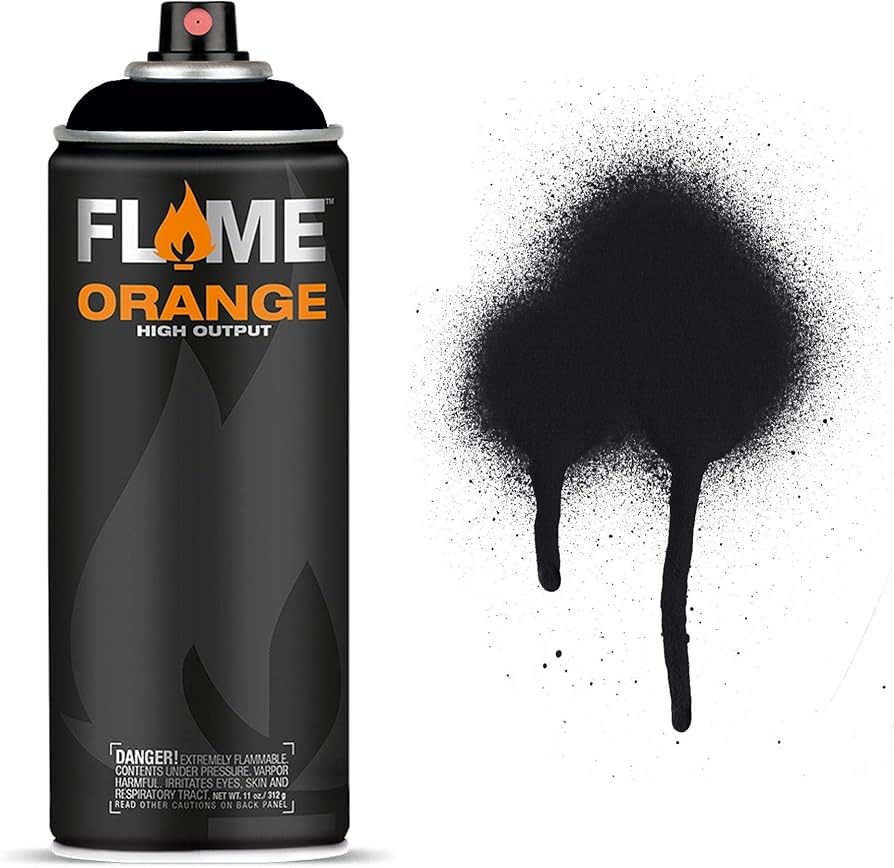
Home Management of Fevers: Effective Strategies for Relief
For many fevers, especially those in the mild to moderate range, home management can be effective and appropriate. Understanding how to properly care for someone with a fever can help alleviate symptoms and promote recovery.
Key Strategies for Managing Fever at Home
- Stay hydrated: Drink plenty of fluids, aiming for 2-3 liters per day
- Rest: Allow the body to focus energy on fighting the infection
- Control room temperature: Ensure the environment is comfortable, not too hot or cold
- Dress appropriately: Use lightweight clothing and bedding
- Cool compresses: Apply to forehead, wrists, and neck to help reduce discomfort
- Regular hygiene: Change bed linens and clothing to stay clean and comfortable
Should you use medication to reduce fever? For mild fevers, medication isn’t always necessary. However, if the fever is causing significant discomfort or is accompanied by pain, over-the-counter medications like paracetamol can be helpful. Always follow dosage instructions carefully.

When to Avoid Fever-Reducing Medications
It’s worth noting that in some cases, such as after receiving a vaccine, it’s recommended to avoid taking fever-reducing medications. This is because the mild fever that sometimes occurs post-vaccination is a sign of the immune system responding to the vaccine, and suppressing this response might potentially reduce the vaccine’s effectiveness.
Complications of High Fevers: Understanding the Risks
While fevers are generally beneficial in fighting infections, prolonged high fevers can potentially lead to complications. Understanding these risks is important for recognizing when a fever might be becoming dangerous.
Potential Complications of High Fevers
- Dehydration: High fevers increase fluid loss through sweating
- Febrile seizures: More common in young children, typically not harmful but can be frightening
- Hallucinations: Can occur with very high fevers, especially in children
- Cognitive impairment: Temporary confusion or delirium in severe cases
Can fever itself cause brain damage? It’s a common concern, but it’s important to note that fever itself does not cause brain damage. The underlying cause of the fever, if severe, could potentially lead to complications affecting the brain, but this is not due to the elevated temperature itself.

Long-term Effects of Recurrent Fevers
For most people, occasional fevers don’t have long-term effects. However, recurrent or chronic fevers can be a sign of underlying health issues that may require investigation. These could include autoimmune disorders, certain cancers, or chronic infections.
How do you differentiate between a benign fever and one that might indicate a serious underlying condition? Persistent or recurrent fevers, especially when accompanied by other chronic symptoms, should be evaluated by a healthcare professional to rule out more serious conditions.
Fever Prevention: Boosting Immunity and Reducing Infection Risk
While not all fevers can be prevented, there are steps you can take to reduce your risk of infections that often lead to fevers. Strengthening your immune system and practicing good hygiene are key strategies in fever prevention.
Strategies for Boosting Immunity
- Maintain a balanced diet rich in fruits, vegetables, and whole grains
- Get regular exercise
- Ensure adequate sleep (7-9 hours for adults)
- Manage stress through relaxation techniques or mindfulness practices
- Stay up to date with vaccinations
Hygiene Practices to Reduce Infection Risk
- Wash hands frequently with soap and water
- Use hand sanitizer when soap and water aren’t available
- Avoid touching your face, especially your mouth, nose, and eyes
- Practice respiratory hygiene (cover your mouth and nose when coughing or sneezing)
- Clean and disinfect frequently touched surfaces
Can certain lifestyle choices impact your susceptibility to fevers? Indeed, factors such as chronic stress, poor nutrition, lack of sleep, and excessive alcohol consumption can weaken the immune system, potentially making you more susceptible to infections and subsequent fevers.

By understanding what constitutes a dangerous fever, recognizing warning signs, and knowing how to manage fevers at home, you can navigate this common health issue with confidence. Remember, while most fevers are benign and self-limiting, any concerns about a fever’s severity or duration should be discussed with a healthcare professional. Stay informed, stay prepared, and prioritize your health and well-being.
Fever in adults – HSE.ie
This page has general information about fever in adults. If you have a child with a fever, see the page on fever in children.
Normal body temperature is usually between 36 and 36.8 degrees Celsius.
A high temperature or fever is when your body temperature is 38 degrees Celsius or higher. It can be a sign that you are unwell. It usually means you have an infection, such as a cold. But it can also be due to more serious infections, such as COVID-19 (coronavirus).
Prevent the spread of COVID-19
A high temperature of 38 degrees Celsius or above can be a symptom of COVID-19.
Symptoms of COVID-19 and what to do
A fever is usually caused by your body fighting a viral or bacterial infection. It usually lasts around 3 to 5 days. Most people recover from a mild fever with self-care at home.
Symptoms
Your symptoms will depend on the type of fever you have.
Mild fever (38 to 38.9 degrees Celsius)
With a mild fever, you might:
- have flushed cheeks
- feel tired
- be warm to the touch
You will usually be able to carry out normal daily activities.
High fever (39 to 39.9 degrees Celsius)
With a high fever, you might:
- feel hot to the touch
- not feel well enough to go to work
- have aches and pains
Very high fever (40 degrees Celsius or higher)
With a very high fever, you will usually want to stay in bed or be inactive. You will not feel well enough to carry out normal activities.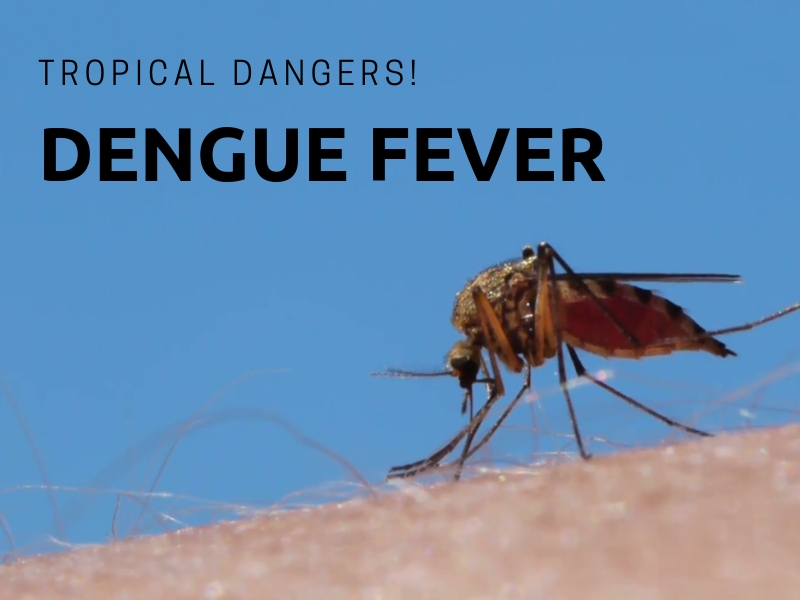 You’ll feel hot to the touch and you may have lost your appetite.
You’ll feel hot to the touch and you may have lost your appetite.
When to see a GP
Most older infants, children and adults do not need medical treatment for a mild fever.
You should contact your GP if you:
- have a very high fever (40 degrees Celsius or higher)
- are still feverish after 3 days of home treatment or seem to be getting sicker
- are shivering or cannot stop shaking, or have chattering teeth, and it does not stop within an hour or so
- have a severe headache that does not get better after taking painkillers
- are having trouble breathing
- are getting confused or are very drowsy
- have travelled overseas recently
Urgent advice: Contact your GP immediately if
you have a fever and notice the following symptoms:
- severe headache
- stiff neck
- sensitivity to light
These symptoms may be a sign of meningitis. This needs urgent medical attention.
This needs urgent medical attention.
Young babies and pregnant women
Babies under 3 months with a fever must see a GP. If your baby is between 3 and 6 months and has a high or very high fever, contact your GP.
Fever in babies and children
If you are pregnant and have a temperature of 38.5 degrees Celsius, or any fever lasting for 3 days or more, see your GP. They need to monitor the effects of the fever on your baby.
Causes of fever
Fever is usually caused by a viral or bacterial infection. Fever is your body’s way of fighting infection. Raising your body temperature helps to kill the virus or bacteria.
Common conditions that can cause fevers include:
- respiratory tract infections
- flu (influenza) and flu-like conditions
- colds
- tummy bugs (gastroenteritis)
- ear infections
- infection of your tonsils (tonsillitis)
- kidney or urinary tract infections
Common childhood illnesses that can cause fevers include:
- chickenpox
- scarlet fever
- rubella (German measles)
- whooping cough
- rheumatic fever
You might have a mild fever after getting a vaccine. Adults should not take paracetamol before or after getting a vaccine. It may make the vaccine less effective.
Adults should not take paracetamol before or after getting a vaccine. It may make the vaccine less effective.
Treatment
Medicine is not needed for a mild fever. You can use paracetamol if you also have a headache, pain or distress.
Managing a fever yourself
Drink plenty of fluids, especially water (little and often is best). Try to drink 2 to 3 litres in 24 hours while you have a fever. This will reduce the risk of dehydration.
Do
get plenty of rest
make sure the room temperature is comfortable – not too hot or too cold
open a window for ventilation if you can, but avoid draughts
wear lightweight clothing and use lighter bedding
use a cool cloth to wash your face, hands and neck
change bed linen and clothing regularly
Content supplied by the NHS and adapted for Ireland by the HSE
Page last reviewed: 28 February 2023
Next review due: 28 February 2026
This project has received funding from the Government of Ireland’s Sláintecare Integration Fund 2019 under Grant Agreement Number 123.
When Is a Fever Too High for a Child, Toddler, or Newborn?
Your little one feels warm to the touch. After taking their temperature, you realize it’s 103°F — a fever!
Even if this scenario sounds super familiar, it can still catch you off guard. Before you race to the doctor, though, take a deep breath.
It’s helpful to familiarize yourself with fever, its function in the human body, and any warning signs that may mean it’s serious — or, alternatively, when you can relax.
Related: What you should do if your newborn has a cold
Normal body temperature is around 98.6°F, though it may fluctuate slightly higher or lower throughout the day. A fever starts with any temperature that reaches 100.4°F or above.
A temperature between 100.4°F and 102.2°F is considered a low-grade fever; a temperature above 102.2°F is considered a high fever.
A fever isn’t a sickness in itself. Instead, elevated body temperature is a sign that your child’s immune system is hard at work fighting off some type of invader — usually an illness or infection.
Along with an elevated temperature, your child may experience these fever symptoms:
- chills
- sweating
- muscle aches
- appetite changes
- dehydration
- weakness
- changes in behavior
The number on the thermometer isn’t always the best indicator of how sick your child is. You need to take into account:
- your child’s age
- how they’re acting
- the number of days they’ve had the fever
- any other symptoms you observe
For example, a small percentage of younger kids — usually between the ages of 6 months and 5 years, according to Mayo Clinic — may even experience febrile seizures. These seizures may involve jerking motions or look like your child is passing out.
Call your doctor if your child experiences a seizure or call 911 if the seizure lasts longer than 5 minutes.
In young babies, even slight temperatures may be a reason for concern. That’s why you should always contact your doctor or head to urgent care if your little one has any fever that’s 100. 4°F or above. (The same goes with a temperature lower than 97.7°F when taken rectally.)
4°F or above. (The same goes with a temperature lower than 97.7°F when taken rectally.)
You should also head to the ER if your baby has a fever and any of the following symptoms:
- trouble feeding
- trouble breathing
- unexplained rash
- vomiting or diarrhea
- acting differently (lethargic, inconsolable, etc.)
For the most accurate read, take your infant’s temperature with a digital thermometer inserted rectally (yes, that’s the best way). There’s some research to suggest that temporal artery thermometers can work accurately for this age as well, but speak with your doctor for guidelines.
Related: Baby fever 101: How to care for your child
In older babies and toddlers, call your doctor if your child’s fever is 102.2°F or above.
You’ll also want to pay attention to how your child responds to over-the-counter (OTC) medications. Always ask your pediatrician about giving any OTC drugs to babies under age 1.
If the fever doesn’t respond to fever reducers (ibuprofen, acetaminophen), there may be something more serious going on.
Other symptoms that warrant urgent care:
- trouble waking up
- trouble breathing
- decreased urine output
- difficulty keeping fluids down (vomiting)
- unexplained dark rash
- stiff neck, abdominal pain, or other concerns
Rectal reading may still be the best way to get an accurate temperature with older babies and toddlers. That said, you may also have success using a digital thermometer in the underarm or a temporal artery scanner.
If you have an in-ear thermometer, you’ll want to wait until your child is at least 6 months old to use it.
Related: Symptoms of fever in adults, children, and babies
For kids over age 3, a fever over 102° F that lasts for 2 or more days may be a reason for concern.
If their doctor tells you to keep an eye on it, a couple days may be OK.
However, if your little one has had a fever for 5 or more days, be sure to call back to make an appointment with their doctor. The same goes for a fever that doesn’t lower with OTC medications.
Other symptoms that may warrant urgent care:
- trouble breathing or swallowing
- difficulty keeping fluids down (vomiting)
- burning with urination or infrequent urination
- unexplained dark rash
- stiff neck, abdominal pain, or other concerns
- acting lethargic or difficult to wake
For children ages 4 and up, you may use a digital thermometer to take temperature orally under the tongue (if your child can hold it there long enough). For best results, be sure to wait 30 minutes after your child last ate or drank anything.
You may also take a reading in the ear or armpit — or even on the forehead using a temporal artery thermometer.
You know your child best. If you feel in your gut something is wrong, don’t hesitate to give your pediatrician’s office a call. And don’t feel silly — they get questions all the time and would rather you be extra safe when it comes to your child’s health.
Get in touch with your doctor or urgent care if:
- Your baby is younger than 3 months old with a fever over 100.
 4°F.
4°F. - Your baby (ages 3 to 6 months) has a temperature of 102°F and is acting unlike themselves (lethargic, uncomfortable, etc.).
- Your older baby (ages 6 to 24 months) has a temperature over 102°F that lasts more than 1 day with no other signs of illness, like cough or diarrhea.
- Your child’s fever has been present for 5 days or longer.
- Your little one’s fever is 104°F or above, regardless of the presence of other symptoms.
- Your child’s fever doesn’t lower even when taking fever reducers.
- Your child is inconsolable, lethargic, or not acting like themselves.
- Your little one is showing signs of dehydration, like decreased urine output. (FYI: Babies should wet at least 4 diapers per day; older kids should urinate at least once every 8 to 12 hours.)
- Your child has recently had immunizations and has a fever of 102° F or higher.
- Your child has recently had immunizations and has had an elevated temperature for more than 48 hours.

- Your child has a febrile seizure. Call your doctor if it lasts less than 5 minutes. If longer, call 911.
Remember: You should always call your doctor for fever in babies under 3 months old.
Older kids do get fevers, though. So while it’s important to know when you should head to the doctor, it’s equally key to know when you can relax and monitor on your own.
In many cases, a fever is their body’s response to fighting off a mild illness. It will resolve on its own when the illness winds down and your child gets better.
You may be able to monitor at home if:
- A fever lasts fewer than 3 to 5 days, provided your little one is acting like themselves. Observe their eating, drinking, and play patterns to see if they’re at their normal level of activity. Being slightly more tired than usual is expected, though.
- The fever is below 102.5°F in children ages 3 months to 3 years or below 103°F in older kids. (Of course, this is provided there are no other warning signs.
 ) Temperatures in this range are common and don’t necessarily signal an emergency.
) Temperatures in this range are common and don’t necessarily signal an emergency. - Your child gets a low-grade fever following immunizations. A slight temperature in the first couple of days after shots isn’t necessarily a reason for concern.
Related: What are the flu symptoms in kids and how is it treated?
Chances are, your little one will have many fevers in their lifetime.
Pay attention to the number on the thermometer but also look at your child. If they’re acting normally and drinking enough fluids — and their fever goes away relatively quickly — you can relax and try at-home comfort measures, like giving them a lukewarm bath.
Otherwise, get in touch with your doctor or head to urgent care to get things checked out.
what to do, what temperature is considered high and why it is dangerous, causes and symptoms
Fever, fever – this is what we call an increase in body temperature. This is the most important defense mechanism of the human body and one of the main symptoms of infection. Most often, we encounter a fever with colds and flu. High temperatures cause some discomfort, but it helps to cope with the disease faster. We will tell you why adults have a fever, when it is necessary to bring down the temperature, and in what cases it is not worth it.
Most often, we encounter a fever with colds and flu. High temperatures cause some discomfort, but it helps to cope with the disease faster. We will tell you why adults have a fever, when it is necessary to bring down the temperature, and in what cases it is not worth it.
Why the temperature rises
1
Body temperature can rise for various reasons: due to overheating, inflammation, hormonal imbalance. The processes of heat transfer in the human body are regulated by a small part of the brain – the hypothalamus. The temperature rises with any physical or chemical impact on it.
An increase in body temperature associated mainly with infections is called a fever. It develops when biologically active substances, cytokines, act on the hypothalamus. The immune system releases them into the blood in response to the inflammatory process. The production of cytokines is also enhanced by the waste products of microbes.
Fever is one of the main symptoms of an acute respiratory viral infection (ARVI). But it is also a protective reaction of the body, aimed at fighting the virus. When the temperature rises, the immune system synthesizes more leukocytes, which destroy or inactivate pathogenic microbes, and interferons, natural antiviral substances.
But it is also a protective reaction of the body, aimed at fighting the virus. When the temperature rises, the immune system synthesizes more leukocytes, which destroy or inactivate pathogenic microbes, and interferons, natural antiviral substances.
What temperature is considered high
2.3
A temperature above 37˚C measured in the armpit is considered elevated. When measuring temperature in the oral cavity, a temperature of more than 37.2˚C is considered elevated, and in the rectum – more than 37.8˚C.
Types of fever:
● Subfebrile – 37.5–38˚C. Accompanies a chronic or easily flowing acute infection.
● Febrile – 38-39˚C. A frequent companion of most acute inflammatory processes – infectious and non-infectious.
● Pyretic (high) – 39-41˚C. This is one of the signs of a moderate flu. High fever is accompanied by symptoms that worsen well-being.
● Hyperpyretic (critically high) – more than 41˚C. It occurs in a severe form of influenza, causes life-threatening disorders of body functions.
What symptoms accompany fever
4, 5
Subfebrile temperature is accompanied by weakness, feeling of weakness, headache, drowsiness, chills. At a temperature of 38˚C, the skin becomes hot, the cheeks turn red, the patient feels intense heat, dry mouth. Lips dry out and crack. With pyretic fever, nausea and vomiting may join. Hyperpyretic temperature is often accompanied by a disorder of consciousness, delirium.
Fever increases blood pressure and heart rate. An increase in temperature by one degree increases the pulse by 10-15 beats per minute.
What diseases occur with fever
6
The most common cause of fever in adults is acute respiratory viral infections (ARVI):
● Coronavirus, rhinovirus infection. This is SARS, affecting mainly the mucous membranes of the nasal cavity and pharynx. Symptoms: runny nose, redness and sore throat, sneezing, coughing. The temperature is subfebrile (37–38˚С) or febrile (38–39C).
● Influenza. Influenza viruses can immediately affect the lower respiratory tract and cause a deep chest cough. Infection is most often accompanied by severe intoxication, which is manifested by headache, aching throughout the body, and severe weakness. The temperature can reach pyretic (39-41˚C) and hyperpyretic (over 41˚C).
● Respiratory syncytial virus infection. It often affects the trachea and bronchi, in a quarter of the patients it leads to pneumonia. Symptoms are similar to the flu, with the difference that intoxication is less pronounced, signs of inflammation of the lower respiratory tract come to the fore – a deep cough with pain behind the sternum.
● Parainfluenza. The virus infects the nasal cavity, pharynx, larynx. The infection is accompanied by a runny nose, bouts of painful coughing, hoarseness, and sometimes a short-term loss of voice.
● Adenovirus infection. Runs with severe runny nose, sneezing, conjunctivitis. The eyes turn red, watery, there is pain and burning in the area of the eyeballs and eyelids. Unlike other acute respiratory viral infections, adenovirus infection is often infected in spring and summer.
The eyes turn red, watery, there is pain and burning in the area of the eyeballs and eyelids. Unlike other acute respiratory viral infections, adenovirus infection is often infected in spring and summer.
Other causes of fever:
● any infectious disease of a viral, bacterial, parasitic nature;
● non-infectious inflammations: acute pancreatitis, aspiration pneumonitis;
● allergic and autoimmune diseases: reaction to vaccination, rheumatoid arthritis, systemic lupus erythematosus;
● diseases of the thyroid gland, adrenal glands;
● oncological diseases: malignant tumors of internal organs, leukemia, lymphogranulomatosis;
● neurological pathologies: traumatic brain injury, cerebral hemorrhage;
● thermal (solar) stroke;
● psychogenic: prolonged emotional stress, neuroses, hysteria.
When temperature rise is dangerous
Fever poses a threat to health with a strong rise in temperature, when the thermometer shows 40˚C or more.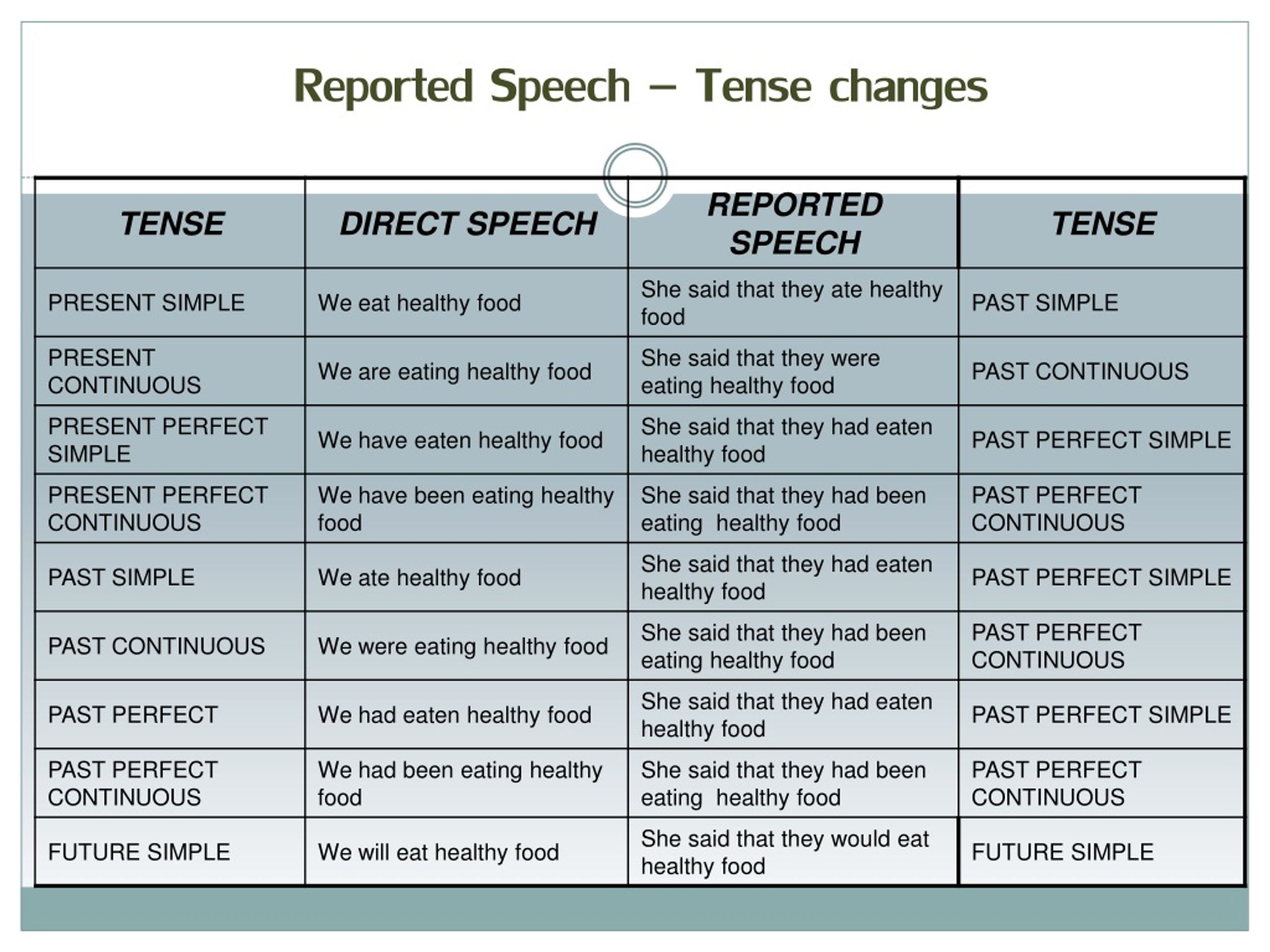 This condition leads to dehydration, disruption of vital organs, and significantly increases the risk of thrombosis.
This condition leads to dehydration, disruption of vital organs, and significantly increases the risk of thrombosis.
For healthy adults, an increase in temperature during SARS by 3˚C from the norm (36.6˚C) is not dangerous. However, for some people, even a febrile temperature can be harmful. At risk:
● Elderly people. After 65 years, it is more difficult for the body to adapt to an increase in temperature due to the age-related decrease in the ability to thermoregulate, the acquisition of chronic diseases.
● People with chronic diseases of internal organs: kidneys, cardiovascular, nervous system. Fever increases the load on these organs and can lead to an exacerbation of the disease.
What to do when the temperature is high
7
Fever helps to defeat the infection faster. With ARVI without fever, the infection takes longer, is accompanied by a pronounced deterioration in well-being, and is more often complicated. Therefore, it is worth suffering malaise for 2-3 days and not bringing down the temperature, provided that the body temperature does not exceed 38. 5˚C. To make it easier to transfer the condition, avoid any physical activity, drink plenty of fluids, do not wrap yourself in blankets and excessively warm clothes that impair heat transfer.
5˚C. To make it easier to transfer the condition, avoid any physical activity, drink plenty of fluids, do not wrap yourself in blankets and excessively warm clothes that impair heat transfer.
But there are times when it is better to bring down the temperature:
● The thermometer reads over 39˚C.
● The rise in temperature is accompanied by a strong deterioration in the condition: loss of strength, poor sleep, nausea, vomiting.
● The patient is at risk.
Fever above 40˚C in adults requires emergency medical attention.
Non-drug methods. Wiping with a damp cloth or a weak vinegar solution will help to reduce the temperature. It is recommended to drink more warm drinks, such as tea with raspberry jam. Raspberries contain natural salicylates – substances that reduce fever. Drink should be moderately warm. Excessively hot or cold drinks and foods should be avoided.
Antipyretics. If non-drug treatments do not help, take an antipyretic medication. The safest drugs are paracetamol-based, which can be taken even by small children and pregnant women. Paracetamol is included in most combined anti-cold complexes, which additionally relieve nasal congestion and symptoms of intoxication in acute respiratory viral infections.
The safest drugs are paracetamol-based, which can be taken even by small children and pregnant women. Paracetamol is included in most combined anti-cold complexes, which additionally relieve nasal congestion and symptoms of intoxication in acute respiratory viral infections.
Antivirals. Lowering the temperature is not an end in itself in the treatment of SARS. Antiviral therapy should fight the causative agent of the infection. To do this, develop specific antiviral drugs that prevent the reproduction of the virus and infection of healthy cells. In the treatment of colds and flu, enisamium iodide has proven itself well. Its use reduces the acute clinical manifestations of viral intoxication. 8
Enisamia iodide at a dosage of 500 mg is part of the drug Nobasit ® Forte 8 . Nobasit ® Forte begins to act within 2 hours after taking the tablet 8. In addition to the direct antiviral effect, enisamia iodide has a pronounced anti-inflammatory activity 9, 10 . The combined action leads to a 3-fold decrease in the severity of fever and other symptoms of intoxication (headache and muscle pain), starting from the second day of treatment 11 . Also Nobasit ® Forte helps to reduce the duration of the disease. 8
The combined action leads to a 3-fold decrease in the severity of fever and other symptoms of intoxication (headache and muscle pain), starting from the second day of treatment 11 . Also Nobasit ® Forte helps to reduce the duration of the disease. 8
Briefly about the main
● Elevated is defined as a temperature above 37˚C measured in the armpit. If it is caused by an infection, this temperature is called a fever.
● The most common cause of fever in adults is SARS. Other causes – infections, non-infectious inflammation, heat stroke, stress, malignant tumors – are much less common.
● Fever brings recovery closer, but often it greatly affects well-being: it is accompanied by weakness, headache, body aches. In the elderly and people with common chronic diseases, fever often causes dangerous complications.
● Cool down in healthy adults should be above 38.5˚C and in at-risk people above 38˚C. If the temperature rises above 40˚C, it is worth calling an ambulance.
If the temperature rises above 40˚C, it is worth calling an ambulance.
● First, try to bring down the temperature with home remedies – cool body wraps, tea with raspberry jam. If that doesn’t help, take an antipyretic medicine.
● Antipyretics will ease the fever but will not speed up recovery. To defeat the infection as soon as possible, take antiviral drugs, for example, Nobasit ®
Forte.
1 Tatochenko V.K., Uchaikin V.F. Fever // Pediatric pharmacology – 2006 – https://cyberleninka.ru/article/n/lihoradka
2 Fugol D.S. An increase in body temperature in children and approaches to its correction // BC – No. 24, 2013 – https://elibrary.ru/item.asp?id=20603056
3 Vasilenko V.V. Measurement of body temperature // RMJ. – No. 29, 2008, S. 1948. https://www.rmj.ru/articles/istoriya_meditsiny/Izmerenie_temperatury_tela/
4 Dvovetsky L.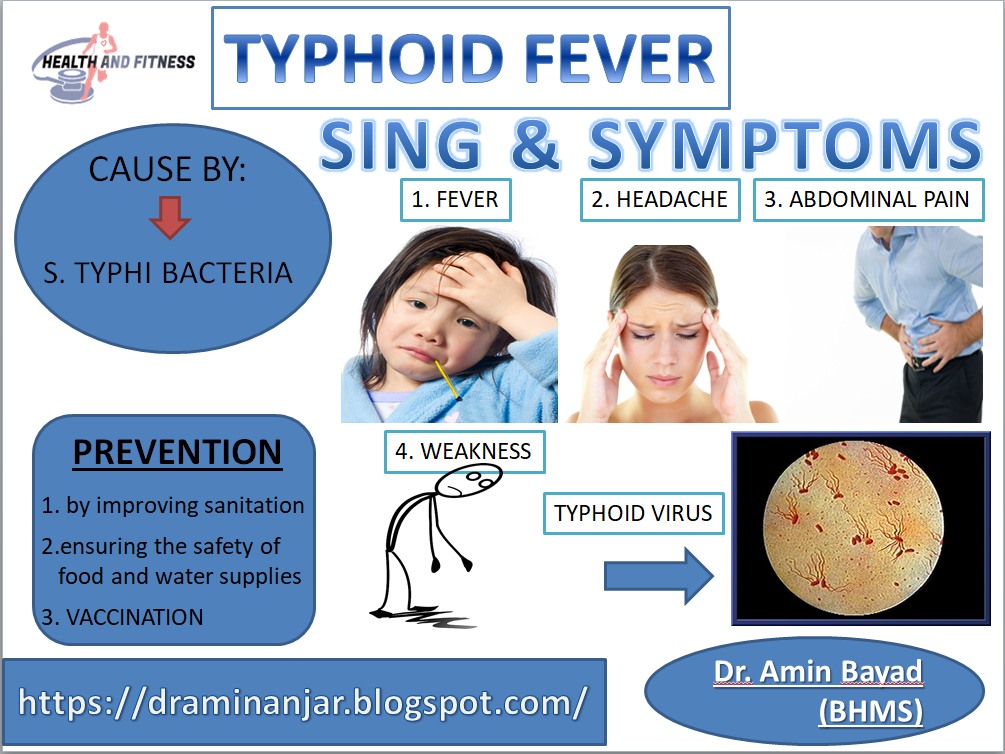 I. Fever: to treat or not to treat // BC – No. 14, 2003 – https://www.rmj.ru/articles/obshchie-stati/Lihoradka_lechity_ili_ne_lechity/
I. Fever: to treat or not to treat // BC – No. 14, 2003 – https://www.rmj.ru/articles/obshchie-stati/Lihoradka_lechity_ili_ne_lechity/
5 Cheshik S.G., Vartanyan R.V. Respiratory syncytial viral infection: clinic, diagnosis, treatment // Children’s infections – No. 1, 2004 – https://cyberleninka.ru/article/n/respiratorno-sintsitialnaya-virusnaya-infektsiya-klinika-diagnosti…
6 Kalyuzhnaya L.I., Zemlyanoy D.A. Heat transfer disorders and fever // Pediatrician – T.6, No. 1, 2015 – https://cyberleninka.ru/article/n/narusheniya-teploobmena-i-lihoradka
7 Didkovsky N.A., Tanasova A.N. Fever. breast cancer. 2003; 4:189.
8 Instructions for medical use of Nobasit® Forte LP-006416.
9 Zyryanov S.K., Butranova O.I., Gaidai D.S., Kryshen K.L., Pharmacotherapy of acute respiratory infections caused by influenza viruses // Therapeutic archive – 2021, (1): pp. 17-27.
10 Kareva E. N., Fedotcheva T.A., Semeikin A.V., Kochina N.A., Krasnoshchok E.V., Shimanovsky N.L. Enisamia iodide – influence on the key components of the inflammatory process in acute respiratory viral infections // Therapeutic archive – 2022; 94 (11): pp. 1233 – 1238
N., Fedotcheva T.A., Semeikin A.V., Kochina N.A., Krasnoshchok E.V., Shimanovsky N.L. Enisamia iodide – influence on the key components of the inflammatory process in acute respiratory viral infections // Therapeutic archive – 2022; 94 (11): pp. 1233 – 1238
11 Lioznov D.A., Karnaukhova E.Yu., Zubkova T.G., Shakhlanskaya E.V., Evaluation of the effectiveness of the ARVI treatment regimen, including etiotropic (enisamia iodide) and symptomatic therapy // Therapeutic archive No. 3 – 2020.
About the product
Download leaflet
Fever | Didkovsky N.A., Tanasova A.N.
L fever – an increase in body temperature as a result of a non-specific protective and adaptive reaction of the body, characterized by a restructuring of thermoregulation processes and occurring in response to exposure to pathogenic stimuli. A distinction is made between fever infectious and inflammatory nature (viruses, bacteria, intracellular parasites) and non-infectious genesis (autoimmune processes, allergic diseases, tumors, metabolic disorders, the use of certain drugs, etc. ) [2]. The regulation of body temperature is carried out with a complex interaction of the nervous, endocrine and immune systems. The most common trigger in the development of hyperthermia are exogenous pyrogens (bacteria, viruses, toxins, etc.), which, when ingested, stimulate the production of endogenous pyrogens by blood cells [4].
) [2]. The regulation of body temperature is carried out with a complex interaction of the nervous, endocrine and immune systems. The most common trigger in the development of hyperthermia are exogenous pyrogens (bacteria, viruses, toxins, etc.), which, when ingested, stimulate the production of endogenous pyrogens by blood cells [4].
Fig.1. The mechanism of development of fever under the influence of exogenous and endogenous pyrogens. ACTH – ACTH, CRF – corticotropin-releasing factor, PGE2 – prostaglandin E2 (CECIL Textbook of Medicine, 19 h edition).
Currently, 11 cytokines are known to have pyrogenic activity, the most important of which are interleukins – IL-1 and IL-6, as well as tumor necrosis factor – TNF-a [4]. Endogenous pyrogens are produced by stimulated monocytes and macrophages. The properties of pyrogens are also possessed by a-, b- and g-interferons. IL-1 and TNF-a are transported with the blood stream to target cells that carry specific receptors for these cytokines, and act on thermosensitive neurons in the preoptic region of the hypothalamus through increased prostaglandin (PG) synthesis E 2 and PGF 2a from arachidonic acid.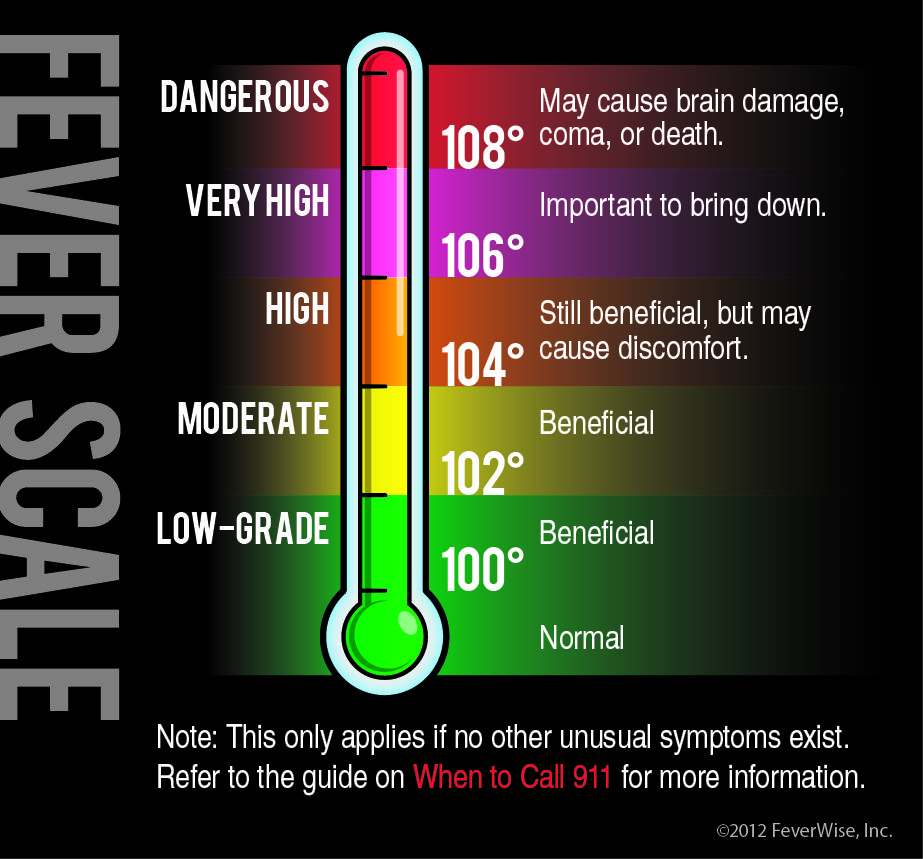
Fig. 2. Metabolism of arachidonic acid (according to A.A. Yarilin) [3]. International abbreviations for prostaglandins (PG), leukotrienes (LT) and thromboxanes (Tx) are used.
The exact mechanism of “switching” of the thermoregulation center under the action of PG has not yet been established. The direct effect of cytokines on the nervous tissue is not excluded. An increase in body temperature activates metabolic processes, the functions of the nervous, endocrine, and immune systems (an increase in the production of antibodies, interferon, an increase in chemotaxis, phagocytic and bactericidal activity of neutrophils), an increase in the antitoxic function of the liver, and an increase in renal blood flow. IL-1 and TNF-a are able to enhance the immune response by activating T-cells and stimulating the production of IL-2. Under the action of IL-1, B-cell proliferation is enhanced, which is accompanied by an increase in antibody formation. It is important to note that these processes proceed most intensively at a temperature of 39°C. Under the action of endogenous pyrogens, the synthesis of “acute phase” proteins (fibrinogen, C-reactive protein, complement fractions B, C 3-4, alpha-glycoprotein, serum amyloid A, proteinase inhibitors) is stimulated by the liver, which play an important role in specific and non-specific protection. Hyperthermia is accompanied by a decrease in serum levels of iron, zinc and copper, which inhibits the growth and reproduction of microorganisms.
It is important to note that these processes proceed most intensively at a temperature of 39°C. Under the action of endogenous pyrogens, the synthesis of “acute phase” proteins (fibrinogen, C-reactive protein, complement fractions B, C 3-4, alpha-glycoprotein, serum amyloid A, proteinase inhibitors) is stimulated by the liver, which play an important role in specific and non-specific protection. Hyperthermia is accompanied by a decrease in serum levels of iron, zinc and copper, which inhibits the growth and reproduction of microorganisms.
In a typical course, fever goes through the following phases or periods – a prodromal period, a period of temperature rise, a period of relative stability, a period of decrease in body temperature, each of which is accompanied by certain autonomic reactions. What changes accompany the development of fever?
1) Tachycardia. With an increase in body temperature by 1 ° C, an increase in heart rate by 10–15 beats per minute occurs.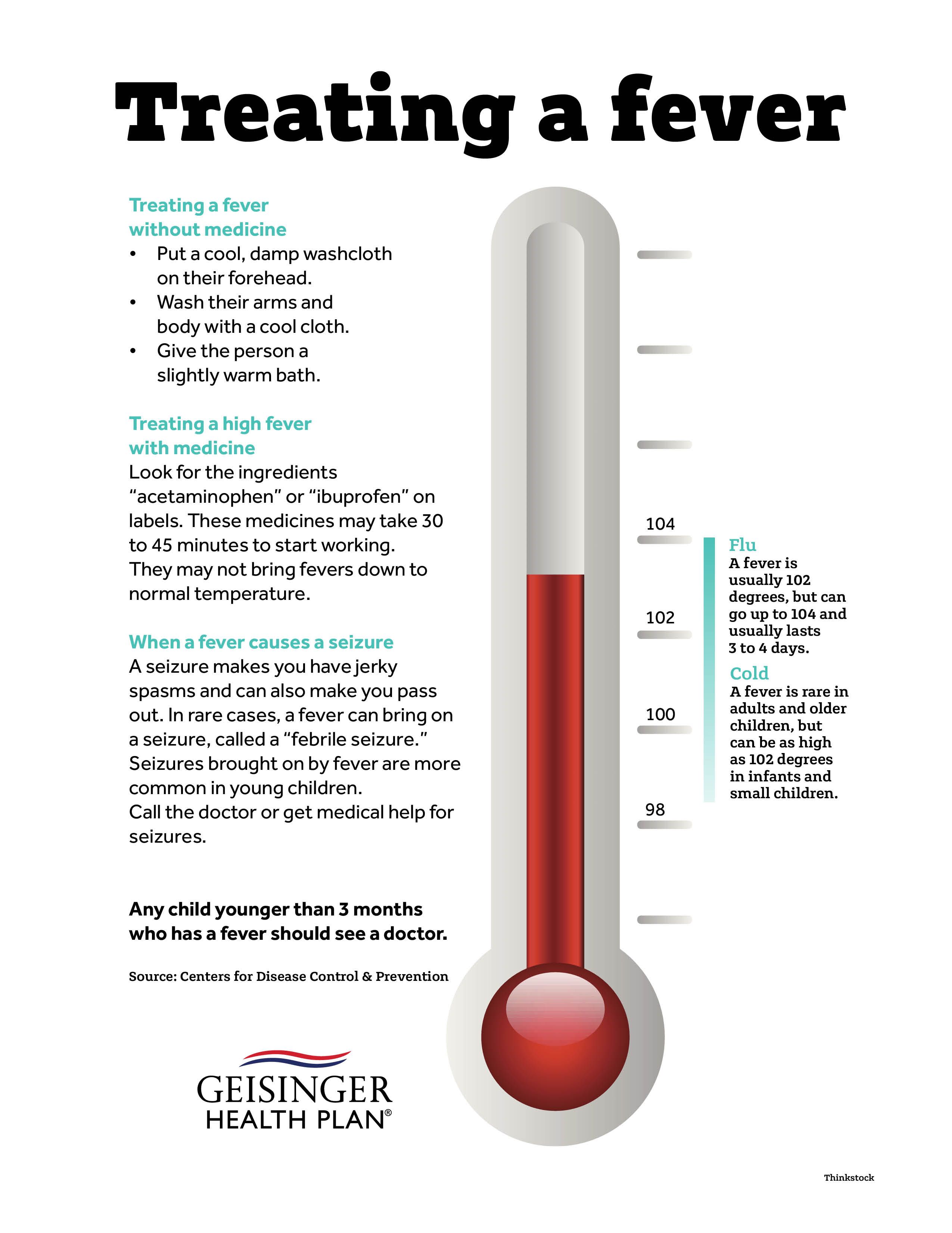
2) It is possible to develop extrasystole, which is due to both the direct toxic effect of bacteria and viruses, and the activation of the sympathetic-adrenal system under the influence of cytokines.
3) In the phase of temperature rise, an increase in blood pressure is possible, and in the phase of temperature decrease, blood pressure drops to a collaptoid state against the background of a decrease in TPS.
4) Upon reaching the maximum body temperature, the process of sweating increases significantly (up to 1 liter of sweat per day is possible), which can contribute to a decrease in BCC and lead to a deterioration in the condition of patients with pathologies of the cardiovascular system. Fluid losses are also aggravated by a compensatory increase in respiratory rate at the height of fever.
5) At the height of fever and even after normalization of temperature, transient appearance in the urine of protein, casts and an increase in creatinine levels is possible. These changes are associated with the direct damaging effect of fever.
These changes are associated with the direct damaging effect of fever.
6) Fever affects the activity of various parts of the gastrointestinal tract, which is manifested by impaired secretion of digestive juices, impaired motility and absorption processes. As a result, there may be a decrease in appetite, the development of a syndrome of impaired absorption and constipation (the latter has a particularly adverse effect on elderly patients). Loss of appetite during fever is associated both with functional disorders of the gastrointestinal tract and with the direct influence of cytokines. So, with prolonged exposure to high concentrations of TNF-a (which has a second name in Western literature – “cachectin”) and partially IL-1, depletion may develop due to the suppression of hunger / appetite (which is most typical for chronic infections and oncological processes).
7) Against the background of fever, metabolic processes in cells increase sharply (with an increase in body temperature by 0. 6 ° C, the level of basal metabolism increases by approximately 10%), redox processes accelerate, and oxygen consumption increases. Hyperthermia can increase blood glucose levels, increasing protein catabolism (negative nitrogen balance). Loss of protein up to 300-400 grams per day is possible. A decrease in diuresis against the background of a reduced BCC can lead to the development of metabolic acidosis.
6 ° C, the level of basal metabolism increases by approximately 10%), redox processes accelerate, and oxygen consumption increases. Hyperthermia can increase blood glucose levels, increasing protein catabolism (negative nitrogen balance). Loss of protein up to 300-400 grams per day is possible. A decrease in diuresis against the background of a reduced BCC can lead to the development of metabolic acidosis.
8) Changes in consciousness (from minor to the development of a delirious state) are associated with the release of b-endorphins under the influence of TNF-a and IL-1. The risk group includes young children, the elderly, patients with pathology of the cardiovascular system, as well as people who abuse alcohol.
9) Due to the immaturity of the central nervous system and the imperfection of the thermoregulation system in children under the age of 5 years, the development of febrile convulsions is possible.
10) An increase in body temperature can lead to the activation of latent herpesvirus infection (HSV-1). For reasons that are not completely clear, most often herpetic eruptions accompany diseases caused by a pyogenic bacterial infection (pneumococci, streptococci, meningococci), malaria, and rickettsiosis. Nasolabial herpes is a marker of reduced cellular immunity. It is important to note that subjective sensations during fever are of a different nature. Some patients are sensitive to even small fluctuations in body temperature, while others do not experience discomfort with a significant increase in temperature (for example, with pulmonary tuberculosis). However, in most cases, patients complain of weakness and malaise, headache, pain in the muscles and joints, chilling or excessive sweating, which “pushes” the doctor to prescribe antipyretics. When deciding on the need to prescribe non-steroidal anti-inflammatory drugs (NSAIDs), it is necessary to take into account both positive and potentially dangerous manifestations of fever. It must be remembered that fever, like any protective-adaptive reaction, with the depletion of compensatory mechanisms or with a hyperergic variant, can cause the development of pathological conditions.
For reasons that are not completely clear, most often herpetic eruptions accompany diseases caused by a pyogenic bacterial infection (pneumococci, streptococci, meningococci), malaria, and rickettsiosis. Nasolabial herpes is a marker of reduced cellular immunity. It is important to note that subjective sensations during fever are of a different nature. Some patients are sensitive to even small fluctuations in body temperature, while others do not experience discomfort with a significant increase in temperature (for example, with pulmonary tuberculosis). However, in most cases, patients complain of weakness and malaise, headache, pain in the muscles and joints, chilling or excessive sweating, which “pushes” the doctor to prescribe antipyretics. When deciding on the need to prescribe non-steroidal anti-inflammatory drugs (NSAIDs), it is necessary to take into account both positive and potentially dangerous manifestations of fever. It must be remembered that fever, like any protective-adaptive reaction, with the depletion of compensatory mechanisms or with a hyperergic variant, can cause the development of pathological conditions.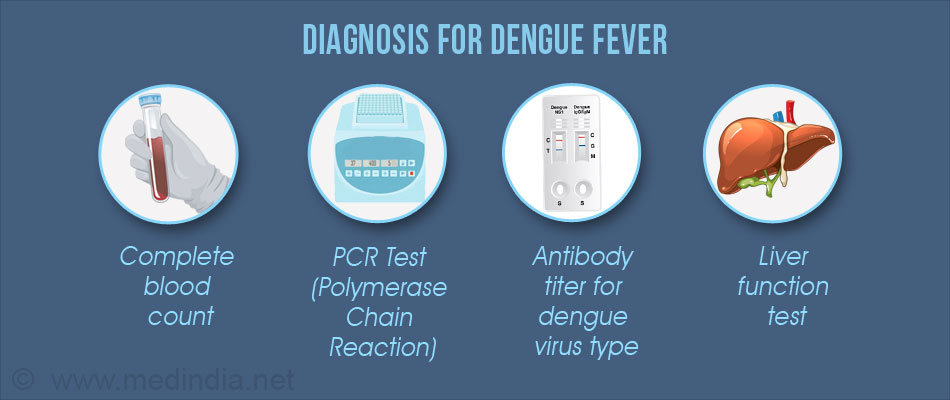 So, an excessive increase in temperature leads to inhibition of immune responses, impaired function of parenchymal organs, the development of febrile convulsions, functional and degenerative disorders in the cardiovascular and central nervous system. A critical decrease in body temperature can contribute to the development of collapse due to a sharp drop in total peripheral resistance and aggravate the condition of patients with pathology of the cardiovascular system.
So, an excessive increase in temperature leads to inhibition of immune responses, impaired function of parenchymal organs, the development of febrile convulsions, functional and degenerative disorders in the cardiovascular and central nervous system. A critical decrease in body temperature can contribute to the development of collapse due to a sharp drop in total peripheral resistance and aggravate the condition of patients with pathology of the cardiovascular system.
So in what case is it necessary to use antipyretics?
An increase in body temperature within 3°C does not have a damaging effect on the human body, however, its increase by more than 6°C (i.e. more than 42.2°C) leads to irreversible changes in the structures of the brain, which is a condition incompatible with life. When deciding on the need to prescribe NSAIDs, it is necessary to take into account the age of the patient, the severity of the underlying and concomitant diseases, as well as the subjective tolerance of fever.
Currently NSAIDs are widely used in the symptomatic treatment of fever in ARVI. However, little attention is paid to non-drug (physical) methods of lowering body temperature, which is especially important in pediatric practice. I would like to remind you that physical methods of lowering the temperature (such as wiping the body with a weak solution of vinegar, applying cold to the area of large arteries, wet wrapping, warm (not cold!) bath, enema with water at room temperature) are recommended not only in domestic, but also in modern foreign literature, they can be quite effective and have no side effects. It is necessary to remember such rules for caring for patients with fever, such as an adequate drinking regimen, a sparing diet, mandatory ventilation of the room, and the prohibition to “wrap up” the patient, since the latter prevents heat transfer.
In febrile conditions on the background of infectious and inflammatory diseases, rectal suppositories Cefecon N are used as an antipyretic, anti-inflammatory and analgesic. Cefecon N suppositories are a unique combination of naproxen, caffeine and salicylamide, which ensures high antipyretic, analgesic activity. Cefecon H has a number of advantages over oral NSAIDs.
Cefecon N suppositories are a unique combination of naproxen, caffeine and salicylamide, which ensures high antipyretic, analgesic activity. Cefecon H has a number of advantages over oral NSAIDs.
Before entering the systemic circulation, medicinal substances must pass through the stomach, small intestine, liver, where they are destroyed and adsorbed to a certain (sometimes significant) degree, which can lead to damage to this organ. Even if taken on an empty stomach, drugs enter the systemic circulation on average no earlier than 30 minutes later. When taking drugs orally in the form of powders and especially tablets, there is the greatest likelihood of their local irritating effect on the gastric mucosa.
With the rectal route of administration, the intake of substances adsorbed in the rectum is carried out simultaneously through the circulatory and lymphatic systems, which are especially developed in this area. In this case, an insignificant part of the adsorbed drugs enters the portal vein, which carries blood from the internal organs to the liver. Moreover, bioavailability from the rectal mucosa for a number of drugs is equivalent to that after intravenous administration. Thus, the introduction of NSAIDs in suppositories can reduce the risk of side effects from the gastrointestinal tract and ensure that the full dose of the drug is delivered, regardless of food intake and concomitant therapy (for example, antacids). In this regard, the use of NSAIDs in the form of rectal suppositories (Cefecon N) seems to be a very promising direction.
Moreover, bioavailability from the rectal mucosa for a number of drugs is equivalent to that after intravenous administration. Thus, the introduction of NSAIDs in suppositories can reduce the risk of side effects from the gastrointestinal tract and ensure that the full dose of the drug is delivered, regardless of food intake and concomitant therapy (for example, antacids). In this regard, the use of NSAIDs in the form of rectal suppositories (Cefecon N) seems to be a very promising direction.
Despite the fact that, in the understanding of the patient, fever is often an undesirable manifestation of the disease, the doctor, when determining the strategy for treating the patient, must take into account the positive factors of the hyperthermic reaction. Moreover, the elimination of fever should not be the main goal of the therapy (which often occurs in the presence of SARS). It is well known that the course of an infectious disease without a temperature reaction may indicate that the patient has an immunodeficiency state and is an unfavorable prognostic factor.

 4°F.
4°F.
 ) Temperatures in this range are common and don’t necessarily signal an emergency.
) Temperatures in this range are common and don’t necessarily signal an emergency.